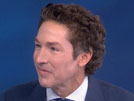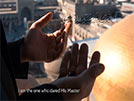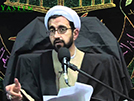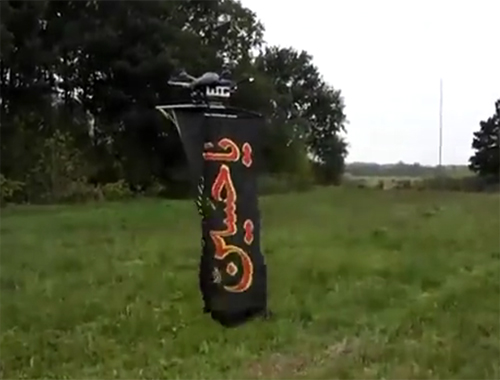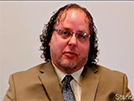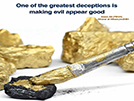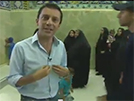THE THEORY OF FOUR ELEMENTS
- Details
- Hits: 8719
One of the subjects taught by Muhammad al-Baqir (a.s.) was physics which included many subjects such as zoology, botany, geology, mechanics etc. In those days all of them were considered as parts of physics, but each of them is a separate subject today. If physics is the science which deals with material things, we must admit that Aristotle was right in treating them as parts of physics.
Ja’far as-Sadiq (a.s.) had learnt physics from his father. When he was only 11 years of age he had attacked the theory of the rotation of the sun around the earth. At the age of 12 he rejected the Theory of Four Elements of Aristotle and proved that it was wrong. Criticising the theory he said, “I wonder how a man like Aristotle could say that in the world there are only four elements-Earth, Water, Fire and Air? The earth is not an element. It contains many elements. Each metal, which is in the earth, is an element.”
From the time of Aristotle, Ja’far as-Sadiq (a.s.), that is, for a period of about one thousand years, the Theory of Four Elements remained the cornerstone of physics. No scholar expressed his doubts in its accuracy. Yet a boy of 12 years of age from Medina raised questions and proved that it was wrong.
When Ja’far as-Sadiq (a.s.) grew up and started teaching in his Institute, he proved that Water, Air and Fire were also not elements. One thousand and one hundred years before the scientists of Europe discovered that air was not an element and separated its constituents, Ja’far as-Sadiq (a.s.) said that air is not an element, but a mixture of many elements.
By sound judgement and reasoning it could be accepted that Earth is not an element, but it was not possible to believe that air is not an element. All eminent scientists after Aristotle, including the scientists of Europe of the 18th century, which was the golden age of science, believed that air was an element. It was only after Lavoisier separated oxygen from the air and demonstrated the important role it plays in breathing and combustion that they accepted that it is not an element.
In 1794, Lavoisier, the father of modern chemistry, was beheaded by the sharp knife of the guillotine. Had he been allowed to live, he would have made many other important discoveries.
Ja’far as-Sadiq (a.s.) was one thousand and one hundred year ahead of his time when he discovered that air is not an element. Shias believe that he made those discoveries because he was an Imam and had Ilm Ladunni (divine knowledge).
Ja’far as-Sadiq (a.s.) has said that there are many elements in the air and that all of them are essential for breathing. After Lavoisier separated oxygen and demonstrated that this is the element in the air which supports life, scientists thought that other elements play no part in breathing. It was quite contrary to what Ja’far as-Sadiq (a.s.) had said. In the middle of the nineteenth century scientists had to change their views about the part played by other elements in breathing.
By that time it was proved that although oxygen purifies blood it also burns combustible materials, which come in contact with it. If living beings breathe pure oxygen for a long time their breathing organs would be oxidized. Oxygen does not normally damage them because it is mixed with other gases.
Presence of gases that are in very minute quantities in the air is also essential for breathing. Ozone, which has the same chemical properties as oxygen, plays a very important role in breathing. It fixes oxygen in the blood. Without the presence of ozone, oxygen cannot purify blood and will fail to perform its function.
Oxygen being the heaviest of all other gases in the air would have settled at the bottom and covered the surface of the earth up to a certain depth. As a result, breathing organs of all animals would have been burnt and animal life would have become extinct. Moreover it would have cut off the supply of carbon dioxide, which plants need so badly, and made it impossible for them to grow on the surface of the earth. Presence of other gases in the air does not let oxygen settle down to the bottom and destroy animals and plant life. At last, after more than one thousand years the theory of Ja’far as-Sadiq (a.s.) that presence of all gases in the air is essential for breathing was proved correct.
Today this theory of Ja’far as-Sadiq (a.s.) does not seem to be important, but in the 1st Century of the Hijra (8th century A.D) it was a revolutionary idea to say that the air is not an element. In Eastern countries, including the city of Medina, which was the city of the Prophet, such ideas could be expressed freely. But up to the 18th century such scientific ideas could not be expressed or tolerated in Europe. In the religion of Islam a Muslim cannot be accused of heresy if he said that the air is not an element, but the followers of many other religions believed in the purity of the air and water and considered them to be elements. It would tantamount to heresy if anyone of them said that the air was not an element.
Priestly was born in 1733 A.D and died in 1804 A.D. He discovered oxygen, but it was Lavoisier who found out its properties. It is said, although there is no proof, that Priestly gave the name of oxygen to this important gas. Oxygen is a Greek word composed of two syllables-oxy, meaning acidity and gen, meaning producer. Oxygen, therefore, means the producer of acidity.
The eminent scholar, Priestly, who cast off his clerical robe and came from the church to the laboratory, had made a great discovery. If he had not entered politics and continued his research, he would have discovered the properties of oxygen also. But politics removed him from laboratory work. He became a staunch supporter of the French Revolution. As a result, he was so hated in England that he had to emigrate to America where he wrote some books, but did not continue his research on oxygen.
Ja’far as-Sadiq (a.s.) was the first person to discover that oxygen produces acidity. We do not think that he had made that discovery when he was a student. Most probably he made that discovery when he had started his teaching career and had already discovered that oxygen is an element. He did not say himself that oxygen is a producer of acidity, but in the course of his lectures, he said that there are many elements in the air but only one of them brings about changes in different materials. It is the same element, which helps in combustion. Without the presence of this element in the air, combustion materials will not burn. He said that this element is so active and strong that if it is separated from air and produced in a pure form, it would burn even iron.
It has been proved by experiments that pure oxygen can burn iron, as was said by Ja’far as-Sadiq (a.s.). If we take a piece of red-hot iron and plunge it into pure oxygen, it will burn with a luminous flame. Just as in the old days people used to light a lamp by burning wicks in vegetable or kerosene, we can make our lamp by putting the wick of red-hot iron into liquid oxygen. This lamp will produce intense light and illuminate our house.
It is reported that once Muhammad al-Baqir, father of Ja’far as-Sadiq (a.s.), said in his classroom that by using scientific methods we can produce fire from water, which extinguishes fire. This remained a riddle till the eighteenth century when it was proved that by employing scientific methods, fire could be produced from water-a fire that is hotter than the fire produced by burning wood or charcoal. If hydrogen, which is a part of water, is burnt with the help of oxygen, which is another part of water, a flame of fire with a temperature of 667 degrees is produced. This process is called oxidation and is employed in welding and cutting metals.
There is no evidence that Muhammad al-Baqir (a.s.) had obtained hydrogen. There is also no proof that Ja’far as-Sadiq (a.s.) had obtained hydrogen or oxygen in pure form. But the experiments, which he had made, were not possible if he had not obtained oxygen in one form or the other. His following remarks are not his theories. They are the results he had obtained by making experiments with oxygen.
There is an element in the air, which is more essential for breathing, than others. It is actually the support of life.
It is the same element, which, in the course of time, and in most cases, by direct reaction, brings about changes in certain materials and putrefies them.
The words, “Direct Reaction”, must be kept in mind, in order to realize that the assessment and description on Ja’far as-Sadiq (a.s.) of the nature of oxygen was quite correct.
After Priestly and Lavoisier had discovered oxygen and found out its properties it was believed that it was only oxygen, which, in the course of time, reacts with foodstuff. That notion changed when Pasteur discovered microbes and proved that putrefaction of foodstuff, dead bodies of animals and many other things is caused by microbes and not by oxygen. But Pasteur must have realized that microbes cannot survive without oxygen. Therefore, what Ja’far as-Sadiq (a.s.) had said is correct that in most case it is the direct reaction of oxygen, which brings about changes and in some cases it is an indirect reaction.
Ja’far as-Sadiq (a.s.) had also said that the element, which supports life, is heavier than all other elements in the air. It was a very important discovery. The world had to wait for about one thousand years till Lavoisier proved that oxygen is so heavy that in nine kilograms of water, there are eight kilograms of oxygen, while hydrogen, which is twice the volume of oxygen, is only one kilogram.
Time did not allow Ja’far as-Sadiq (a.s.) to do further research on the element in the air which supports life and produces acidity. However, he was the pioneer and leader in the scientific study of oxygen.
It is reported that after the death of Ja’far as-Sadiq (a.s.) his students said that air or oxygen could be liquefied. This was a very old idea. Even before Aristotle it was believed that all gases could be liquefied, but there were no means available to do so.
Lavoisier himself could not liquefy oxygen because till the end of the eighteenth century science and technology had not developed enough to enable him to do so. Moreover, he was not allowed to live long enough to continue his work.
For a long time after Lavoisier scientists believed that oxygen could not be liquefied. Finally technology developed to such an extent that it became possible to create very low temperatures, but in spite of that advancement in technology, it was not possible to liquefy oxygen in sufficient quantities so that it could be used in industry. It was only in the twentieth century that technology to produce very low temperatures reached perfection. By producing a temperature of minus 1830 degrees Centigrade, oxygen was liquefied under ordinary air pressure. The temperature of minus 1830 degrees Centigrade is only 900 degrees above absolute zero, which is minus 2730 Centigrade. At this temperature the internal movement of matter comes to a standstill.
Many scientific ideas of today existed in old days also, but there were no means to make a practical use of them. Five hundred years before Christ, Democritus had enunciated the Theory of the Atom. He said that matter is made up of atoms and that there is a brisk movement inside the atoms.
If we forget, for the time being, the names of electrons, protons and neutrons, which were discovered in the twentieth century, we will realize that he had given a correct description of an atom. However, no practical use of this knowledge could be made till the Germans tried to harness the power of atoms and use it in World War II. Finally the Americans entered the race and succeeded in exploding the first atomic bomb.
Imam Reza (AS) Network

